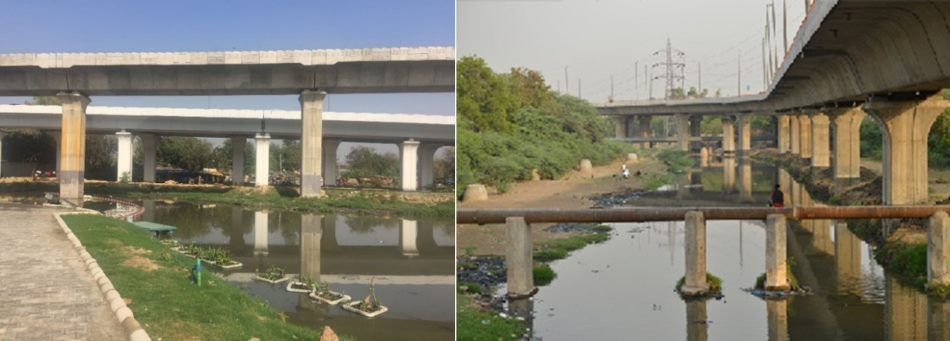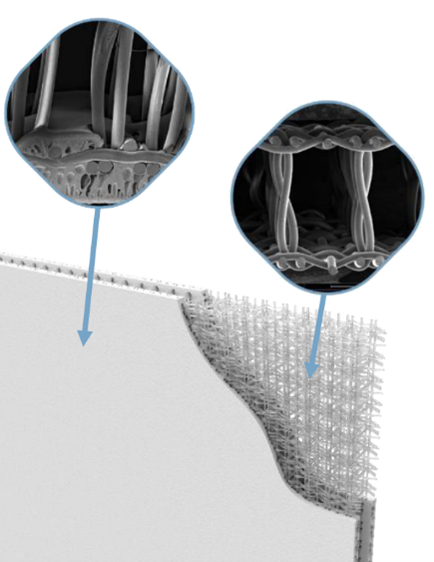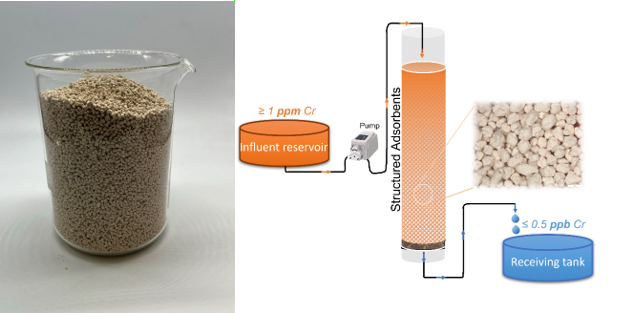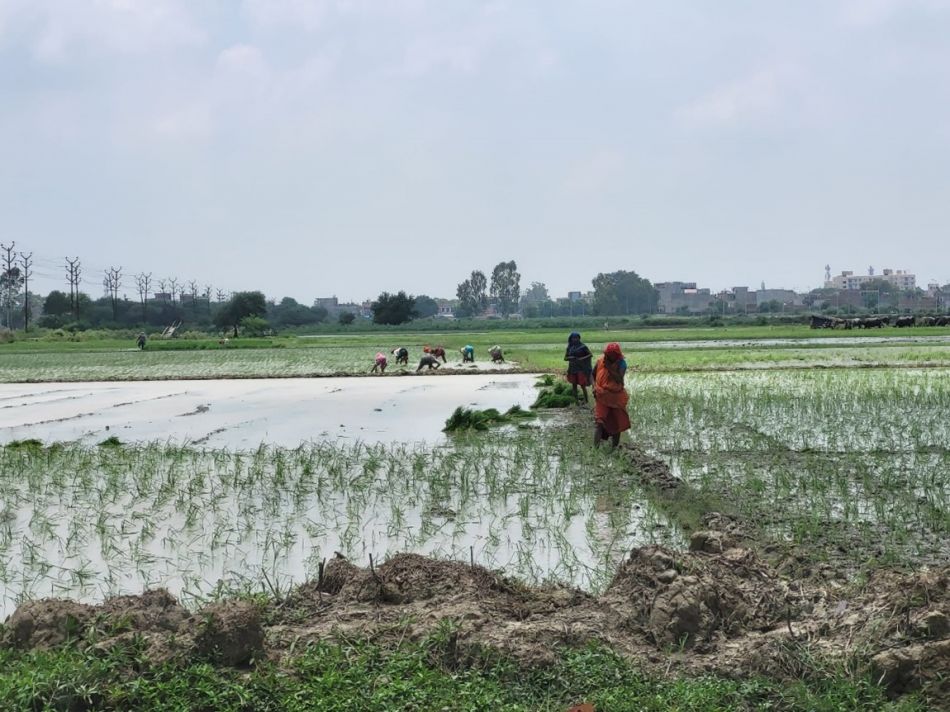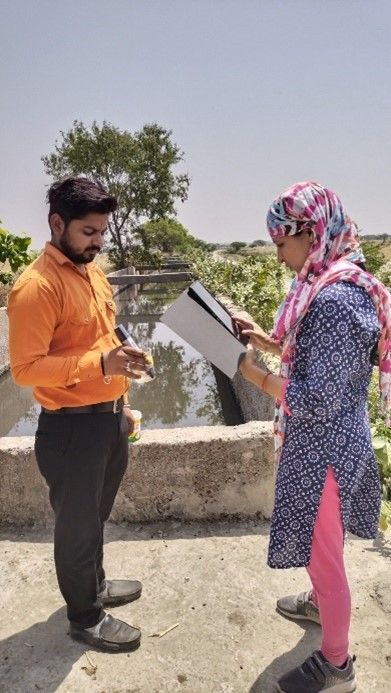VITO reflects with satisfaction on the successful completion of the EU-India Water collaboration project “Pavitra Ganga”. In this Horizon2020 project, European and Indian partners demonstrated innovative solutions for India’s challenges related to water quality, wastewater treatment and resource recovery. VITO coordinated the project along with The Energy and Resources Institute (TERI), based in New Delhi.
Pavitra Ganga brought together a strong European and Indian partnership of research institutes, universities, SMEs and industry. One of the main objectives was to demonstrate the performance of new technologies for the removal and reuse of bulk organics and nutrients from wastewater, including the removal of heavy metals and contaminants of emerging concern.
Challenging test locations
The technology pilots ran at two quite different and challenging sites in India: the wastewater treatment and wastewater reuse irrigation scheme at Jajmau, Kanpur, which is surrounded by one of the largest clusters of tannery companies in India. The other site was the Barapullah Drain: one of the many open sewers in New Delhi, discharging the solid waste and wastewater of many Delhiites, small scale industries and hospitals into the Yamuna River.
Improved TRLs
The project coordination was in the hands of Dr. Paul Campling, International Business Development Manager for VITO Water. He talks about the work and results of the project that started five years ago: “We can reflect on a job well done, under difficult circumstances, with positive outcomes for the future in terms of promoting wastewater reuse and resources recovery in India, which are clearly relevant for other regions of the world.
We succeeded in increasing the technology readiness levels (TRL) of several technologies, and within the timeframe of the project, some of these have proved to have a high market potential, with one already being commercialised by Xylem, a global water engineering company.”
IPC membranes
“Among the piloted technologies was VITO’s ANDICOS (Anaerobic Digestion by Combining Organic waste and Sewage) approach. The IPC membranes used for direct sewage filtration showed very good results in terms of delivering safe treated wastewater for irrigation. These membranes are being manufactured by the VITO spin-off Blue Foot Membranes. These energy-efficient and incredibly robust flat sheet membranes are being commercialized for the Indian market by Ion Exchange, one of Pavitra Ganga’s partners. The fact that our demonstration locations were one of the most challenging across India, is a sure way to increase the market uptake of this technology”, tells Paul Campling.
Contaminants of emerging concern
VITO conducted environmental scans of the two case areas. Surface and ground water samples were brought back for VITO to carry out a non-targeted screening, which detected more than 140 contaminants of emerging concern, including pharmaceuticals, industrial chemicals, pesticides and PFASs. Targeted analyses to measure the concentrations of selected concentrations were then carried out. “This shows us that, as in Europe, wastewater treatment in India also has to deal with difficult contaminants to deliver safe treated wastewater for re-use”, outlines Paul Campling. “So the choice of Pavitra Ganga to focus on secondary, tertiary and quaternary treatments – with the quaternary “polishing” techniques dealing with the contaminants of emerging concern was the right one.”
Structured adsorbents for heavy metal pollution
“Another VITO technology, the structured clay-type adsorbents, to remove and recover low concentrations of heavy metals was tested in Kanpur and performed well for the removal of chromium from the effluent of the Jajmau wastewater treatment plant.”
G-STIC – Climate Action Programme
During the project it became obvious that we also needed to address the scale of the legacy pollution and the potential health impacts for the local communities at the wastewater reuse irrigation scheme at Jajmau, Kanpur. This was facilitated by the set-up of another project in the area: the G-STIC Climate Action Programme project PERISCOPE (Pollution monitoring, Emissions control, and Remediation methods to safeguard Irrigation Schemes using treated wastewater in a Changing climate fOr PEri-urban agriculture). “This sister project has provided incredibly valuable additional information to Pavitra Ganga as it is directly dealing with the downstream issues of the legacy pollution caused by the underperforming wastewater treatment facility at in the Jajmau STP/CETP in Kanpur.
Smart water management
The quality of the water resources in the demonstration areas were also monitored by Pavitra Ganga with a sensor network and citizen-based water quality monitoring campaigns. The monitoring information and regional hydrological modelling were integrated into a water management dashboard established by VITO. Paul Campling: “This allowed us to get better insights into the sources, pathways and changes in water pollution and to take important steps towards a smart water management in the two demonstration areas. The sensor monitoring and modelling data combined with the water knowledge of the project partners provided relevant information for exploring options to improve water resources management. This is very much in line with the current approach adopted by the National Mission for Clean Ganga (NMCG).”
Stakeholder interaction
In addition to all the efforts on technological solutions, work was also done within Pavitra Ganga on improving policy advice and innovations for water governance. “Through the organization of dedicated project conferences, presentations at international events, and the organisation of co-creation workshops and interactions with local policymakers and politicians, we managed to put VITO on the Indian water sector map. The citizen-based water quality monitoring approach also facilitated the engagement and awareness raising with the farmers using the wastewater for irrigation.”
Water4All
The Pavitra Ganga project showed once again VITO’s engagement and willingness to collaborate with partners around the world for water security across the planet. Our commitment will continue with new research and innovation projects, including the Water4All Partnership. This is a funding programme from the European Commission, the Member States and non-EU countries, such as Brazil and South Africa, to pool collaborative scientific research funding to achieve the UN’s Sustainable Development Goals. We hope that the Pavitra Ganga project and the established stakeholder connections will help us to facilitate the involvement of India in the Water4All Partnership.”, concludes Paul Campling.


